Anise Spectacle Warrior: India's Epic Martial Arts Adventure
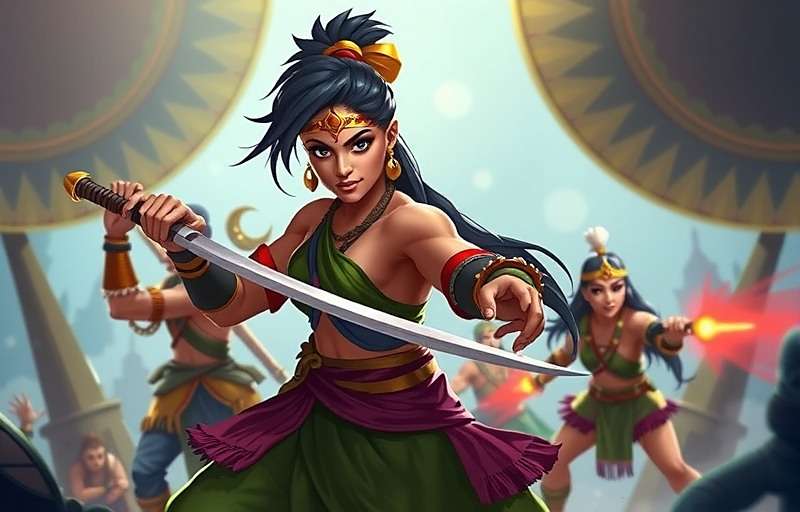
Anise Spectacle Warrior is not just another action game, my friend - it's a tribute to India's forgotten martial arts traditions, a journey through time that brings our ancient warrior heritage to life on your mobile screen!
Developed by Saffron Interactive Studios in Hyderabad, Anise Spectacle Warrior has taken the Indian gaming scene by storm since its launch in early 2024. What makes this game truly special is how it showcases the incredible diversity of India's martial arts, from Kalaripayattu in Kerala to Gatka in Punjab, and everything in between.
In Anise Spectacle Warrior, you assume the role of a warrior initiate training under legendary masters across different regions of India. Your quest? To master various combat styles, recover ancient artifacts, and protect the sacred anise crop - which, according to in-game lore, possesses mystical properties that have protected India for centuries.
Introduction to Anise Spectacle Warrior
Imagine stepping into a world where ancient Indian warriors still walk the earth, where every region has its own unique fighting style honed over centuries, and where the line between myth and reality blurs. That's the world of Anise Spectacle Warrior.
The game was born from the developers' frustration that so many young Indians today are unaware of our rich martial arts heritage. While the world knows about Chinese Kung Fu and Japanese Karate, few outside India (and even many within) know about our own incredible combat traditions like Silambam, Thang-Ta, or Malla-Yuddha.
Anise Spectacle Warrior aims to change that. Through immersive gameplay, stunning visuals, and authentic storytelling, the game introduces players to these forgotten arts while delivering an action-packed experience that can stand toe-to-toe with any international RPG.
Did you know? India has over 30 distinct traditional martial arts styles, each developed in different regions to suit local conditions and combat needs. Anise Spectacle Warrior features 12 of these styles!
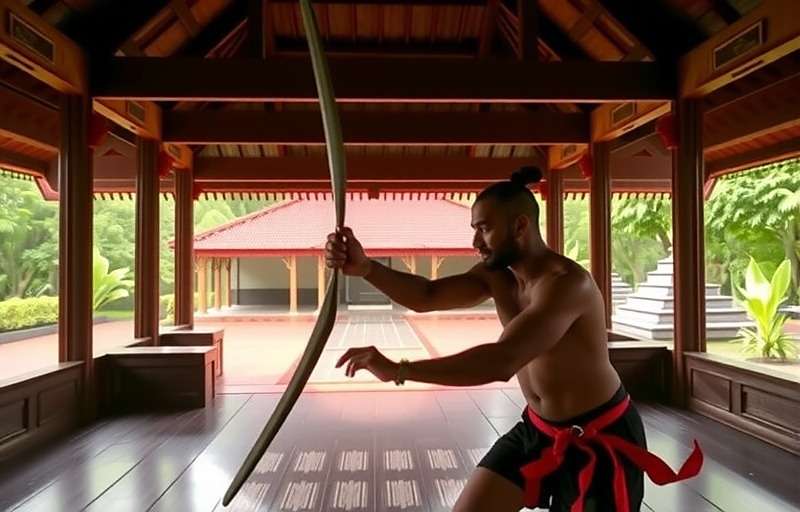
What truly sets Anise Spectacle Warrior apart is its commitment to authenticity. The developers worked with actual martial arts masters from across India to ensure each fighting style is represented accurately. From the weapon techniques to the stances and philosophy behind each art, everything has been carefully researched.
"We spent three years visiting different gurus and dojos across India," says lead game designer Meera Krishnan. "Our animators filmed actual practitioners performing each move, which we then recreated digitally. We wanted players to feel the weight of history in every strike."
The anise connection, you might be wondering? In many Indian traditions, anise (saunf) is not just a spice but has ceremonial and medicinal purposes. The game weaves this into its lore - the sacred anise fields must be protected from those who would misuse their power, providing a unifying quest across all regions.
Gameplay Mechanics of Anise Spectacle Warrior
Core Combat System
Anise Spectacle Warrior features a deep yet accessible combat system that lets players experience the unique feel of each martial art. Unlike many action games that use a generic fighting system, each style in Anise Spectacle Warrior plays completely differently.
For example, Kalaripayattu (from Kerala) emphasizes fluid, dance-like movements and weapon mastery, while Gatka (from Punjab) focuses on rapid strikes with sticks and swords. The game's controls adapt to each style - you'll use different gestures and button combinations depending on which warrior tradition you're practicing.
Combat isn't just about button mashing, though. Each style has its own philosophy and strategic approach. Some emphasize defense and counterattacks, others prioritize speed and agility, while some focus on raw power. Mastering when to use each style is key to progressing through the game.
As you progress, you'll unlock new techniques, combos, and special moves that reflect the advanced teachings of each martial art. Many of these moves are based on actual techniques passed down through generations of practitioners.
Regional Storylines and Settings
The world of Anise Spectacle Warrior is as diverse as India itself. The game is divided into distinct regions, each with its own storyline, enemies, environments, and martial arts to master.
Set in the lush backwaters and ancient temples of Kerala, this region introduces players to India's oldest martial art. Known for its flowing movements and emphasis on both armed and unarmed combat, Kalaripayattu forms the foundation of your warrior training.
In the fertile fields and fortresses of Punjab, you'll learn this Sikh martial art focused on sword and stick fighting. Gatka emphasizes speed, precision, and spiritual discipline, with techniques designed for both battlefield and self-defense.
The dry plains and ancient Tamil kingdoms are where you'll master Silambam, a weapon-based martial art using staffs of various lengths. This style incorporates intricate footwork and weapon spins that can disarm opponents with minimal effort.
In the hilly terrain of Northeast India, Thang-Ta teaches you the art of the sword and spear. This style combines combat techniques with dance-like movements and is deeply connected to Manipuri culture and mythology.
Each region in Anise Spectacle Warrior feels distinct not just visually, but also in terms of gameplay. The enemies you face are inspired by local folklore and history, from bandits in the Rajasthan deserts to mythical creatures in the forests of West Bengal.

Progressing through each region's storyline unlocks new abilities and gear that reflect the local culture. In Rajasthan, for example, you'll acquire intricate armor inspired by Rajput warriors, while in Bengal, you'll learn techniques that incorporate elements of local dance forms.
Character Customization and Progression
Anise Spectacle Warrior offers extensive character customization that goes beyond just appearance. When creating your warrior, you'll choose a starting region that determines your initial fighting style, but as you progress, you'll have the opportunity to learn and combine techniques from different traditions.
This hybrid approach allows for unique playstyles. You might combine the footwork of Kalaripayattu with the weapon techniques of Silambam, or blend the defensive moves of Malla-Yuddha (wrestling) with the striking power of Gatka. The possibilities are nearly endless, encouraging experimentation.
The game's progression system is tied to both combat mastery and story completion. As you defeat enemies and complete quests, you'll earn "Warrior Spirit" points that can be used to upgrade your abilities. You'll also collect ancient manuscripts that teach new techniques and provide historical context about each martial art.
Equipment customization is equally deep. Each region offers unique weapons, armor, and accessories that not only change your appearance but also provide gameplay bonuses. A Kerala-style wooden shield, for example, might offer better protection against piercing attacks, while a Punjabi sword could deal extra damage to armored enemies.
Many of these items are based on historical artifacts, with detailed descriptions explaining their cultural significance. It's this attention to detail that makes Anise Spectacle Warrior not just a game, but a window into India's martial heritage.
Multiplayer and PvP Features
While Anise Spectacle Warrior offers a rich single-player experience, its multiplayer modes have become a major attraction for competitive players. The game's PvP arenas allow warriors from across India to test their skills against each other in fair, balanced combat.
Unlike many fighting games that favor button-mashing, Anise Spectacle Warrior's multiplayer rewards skill and strategy. Knowing when to switch between fighting styles, understanding your opponent's patterns, and mastering timing are crucial to victory.
Regular tournaments are held with regional and national leaderboards. These tournaments often feature special rules that encourage players to use underappreciated fighting styles, helping to maintain a diverse meta-game.
For those who prefer cooperative play, the game offers "Guru Challenges" where teams of up to four players must work together to defeat powerful bosses inspired by Indian mythological figures. These challenges require players to use complementary fighting styles, encouraging teamwork and strategy.
"The best part is seeing players develop their own unique fighting styles," says multiplayer designer Arjun Patel. "We've been amazed by combinations that even our development team didn't think of. It's a testament to how deeply players are engaging with the different martial arts."
Download Statistics and Regional Popularity
The success of Anise Spectacle Warrior has exceeded all expectations. Within just 10 months of its launch, the game has been downloaded over 27 million times in India, making it one of the fastest-growing mobile RPGs in the country's history.
What's particularly interesting is the game's regional popularity mirroring the real-world martial arts it features. Kalaripayattu's home state of Kerala shows the highest engagement rates, while Punjab has seen massive adoption thanks to the accurate representation of Gatka.
The game has also attracted a significant female player base compared to other action titles - a trend the developers attribute to their inclusive character designs and the historical accuracy of featuring female warriors from Indian history.
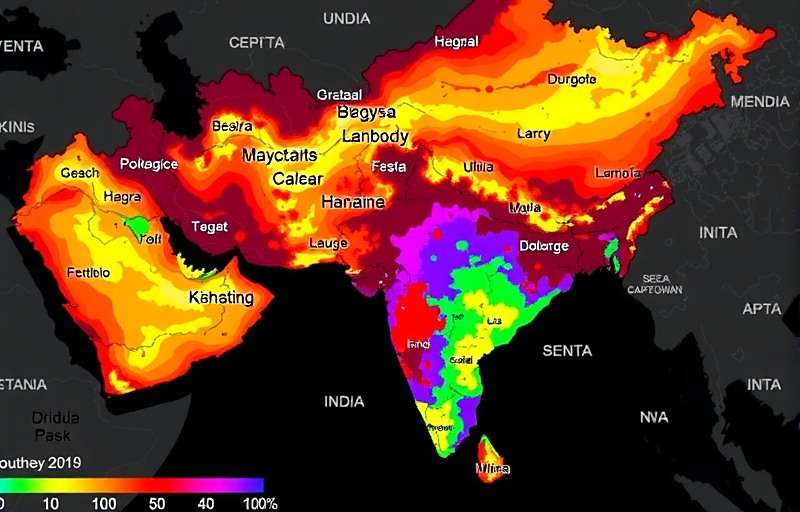
Localized Versions and Language Support
Understanding India's linguistic diversity, the developers of Anise Spectacle Warrior have invested heavily in localization. The game is currently available in 18 Indian languages, with more planned for future updates.
These include not just major languages like Hindi, Bengali, Tamil, and Telugu, but also regional languages such as Malayalam, Kannada, Punjabi, Gujarati, Marathi, Odia, Assamese, Nepali, Konkani, Manipuri, Sindhi, Bhojpuri, Rajasthani, and English.
What sets Anise Spectacle Warrior's localization apart is its attention to cultural nuances. For example, the Tamil version uses appropriate honorifics and regional idioms that resonate with local players, while the Punjabi version incorporates folk sayings and proverbs related to warrior culture.
The voice acting, which plays a crucial role in the game's storytelling, is performed by native speakers for each language. This commitment to authenticity has paid off, with many players praising how natural the dialogue feels in their mother tongue.
"Hearing the warrior masters speak in my dialect of Bengali was a powerful moment," says Kolkata-based player Debjani Banerjee. "It made the game feel like it was created specifically for us, not just translated from English. You can tell the developers really cared about getting the details right."
This localization effort has been particularly important for younger players and those less comfortable with English, allowing them to fully engage with the game's educational content about Indian martial arts history.
Player Reviews and Community Reception
Anise Spectacle Warrior has received overwhelming praise from both players and critics. On the Google Play Store, the game maintains an impressive 4.8 rating from over 220,000 reviews, while the iOS version boasts a 4.9 rating from more than 75,000 reviews - remarkable scores for an action RPG.
"As someone who practices Kalaripayattu in real life, I was skeptical about how it would be represented in a game. But Anise Spectacle Warrior has blown me away! The movements are accurate, the philosophy is respected, and they've even included advanced techniques that most people don't know about. My guru has started using screenshots from the game to teach our students! This is more than a game - it's preserving our heritage."
"I've never been into fighting games before, but Anise Spectacle Warrior caught my attention because of the Punjab levels. The Gatka representation is amazing! My grandfather was a Gatka master, and seeing those moves on screen brought tears to his eyes. The Punjabi dialogues are perfect - not the formal kind you usually get in games, but the way we actually speak. The story is engaging, the combat is challenging but fair, and I've learned so much about other Indian martial arts too."
"Anise Spectacle Warrior is the most polished Indian game I've ever played. The graphics are stunning, especially on my new phone, and the combat system is deep without being complicated. I love how each region feels unique, not just in terms of fighting styles but also music and architecture. My only complaint is that some of the later levels require a lot of grinding, but that's common in this genre. Overall, it's a source of pride to see such a high-quality game coming out of India."
"Finally, a game with female warriors who aren't just eye candy! The women in Anise Spectacle Warrior are powerful, skilled fighters with their own storylines and fighting styles. As someone who's always been interested in martial arts but found most dojos to be male-dominated, this game has been inspiring. I especially love the Gujarati voice acting - it's like my aunt is giving me combat tips! I've even started looking for Kalaripayattu classes because of this game."
"Silambam is in my blood - my family has practiced it for generations. When I saw it featured in Anise Spectacle Warrior, I had to try it. The developers have done their homework! The staff techniques are accurate, and they've even included the traditional music that accompanies our practice. The multiplayer battles are intense but fair, and I love teaching other players about Silambam strategies. This game has helped me connect with other martial arts enthusiasts across India. Very proud of this Indian creation!"
Critics have praised Anise Spectacle Warrior for raising the bar for Indian game development. Technology Review India called it "a landmark achievement that proves Indian studios can compete with the best in the world while staying true to their cultural roots."
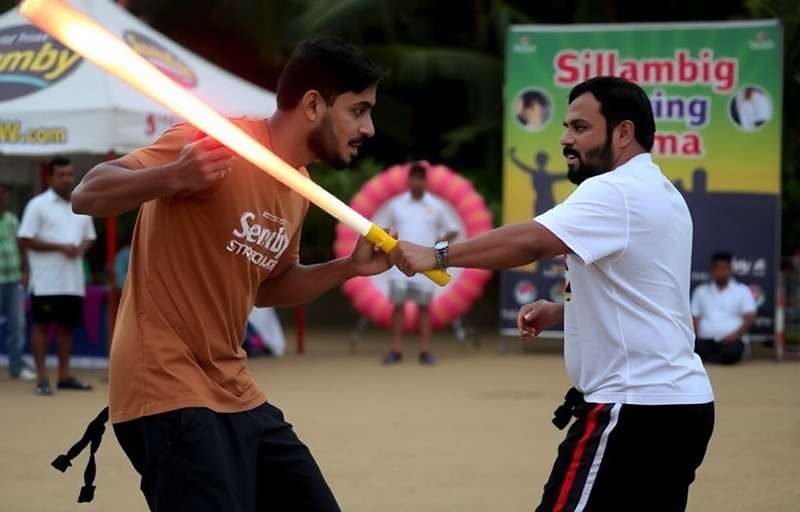
Combat Strategies and Pro Tips from Indian Players
Indian players have developed sophisticated strategies for mastering Anise Spectacle Warrior, often drawing on real-world martial arts knowledge and regional fighting philosophies. Here are some of the most effective techniques and tips from top players across the country:
Mastering Regional Fighting Styles
Each martial art in Anise Spectacle Warrior requires a different approach. Top players emphasize mastering the fundamentals of each style before trying to combine them.
"Kalaripayattu is all about flow and momentum," explains Kerala-based player and real-life martial artist Ajith Kumar, who ranks in the top 50 players nationwide. "Many new players try to rush in with attacks, but Kalaripayattu rewards patience. Use the circular movements to deflect attacks, then strike when your opponent is off-balance. The key is to think of your body as a single unit - hands, feet, and weapon all moving in harmony."
For Gatka players, speed and precision are paramount. "Gatka isn't about brute strength," advises Punjab's Simranjeet Singh, a top PvP competitor. "It's about quick strikes and even quicker footwork. Learn the timing for the rapid combo attacks, but don't overextend - leave yourself room to block or dodge counterattacks. The stick is an extension of your arm, so practice the transitions between offensive and defensive moves until they become second nature."
Silambam specialists recommend focusing on range control. "The staff gives you reach, so use it," says Tamil Nadu's Selvi Raju, a champion in multiple tournaments. "Keep your opponents at a distance where they can't hit you but you can hit them. When they rush in, that's when you use the spin techniques to create space. Master the different grip positions - each gives you different attack angles that can confuse your opponent."
Effective Style Combinations
While mastering individual styles is important, the true experts in Anise Spectacle Warrior know how to combine different martial arts for maximum effectiveness. Here are some of the most devastating combinations used by top players:
Kalaripayattu + Thang-Ta: This combination pairs Kalaripayattu's fluid movement with Thang-Ta's deadly weapon techniques. "Use Kalaripayattu's footwork to get close, then switch to Thang-Ta for devastating sword strikes," recommends Manipur's Biren Singh. "It's especially effective against heavily armored opponents."
Silambam + Gatka: "The long-range control of Silambam combined with Gatka's rapid strikes is perfect for PvP," explains national tournament finalist Arvind Patel. "Keep opponents at bay with Silambam staff techniques, then when they're frustrated and charge in, switch to Gatka for a flurry of blows they can't block in time."
Malla-Yuddha + Any Weapon Style: The wrestling techniques of Malla-Yuddha provide the perfect foundation for any weapon-based style. "Use Malla-Yuddha to close distance and take opponents to the ground, then finish them with whatever weapon style you prefer," advises Delhi's Kavita Sharma. "It's especially effective against players who rely too much on fancy footwork."
- Learn the rhythm of each style - Every martial art has a natural rhythm to its attacks and defenses. Once you internalize this rhythm, you'll find combos flow naturally and you'll anticipate enemy moves more easily.
- Practice in the dojo daily - The training dojos aren't just for beginners. Top players spend at least 15 minutes daily practicing fundamentals, which builds muscle memory for real battles.
- Study your opponent's patterns - In PvP, most players fall into predictable patterns. Watch for 30 seconds before committing to your strategy, then exploit their weaknesses.
- Don't neglect defense - Offensive moves are flashy, but tournament champions know that superior defense wins matches. Master the parry timing for each style.
- Upgrade your focus meter - Your focus meter allows special moves, but many players neglect upgrading it. A longer focus meter can turn the tide in difficult battles.
- Use the environment to your advantage - Each region's terrain offers different advantages. In Kerala, use the water to slow enemies; in Punjab, use the narrow alleyways to limit multiple attackers.
- Join a warrior clan - Clan members share techniques and practice together. Many top players credit their clan for helping them master difficult styles.
- Respect the philosophy - Each martial art has underlying principles that translate to gameplay. Kalaripayattu's emphasis on balance, for example, teaches you to manage your stamina effectively.
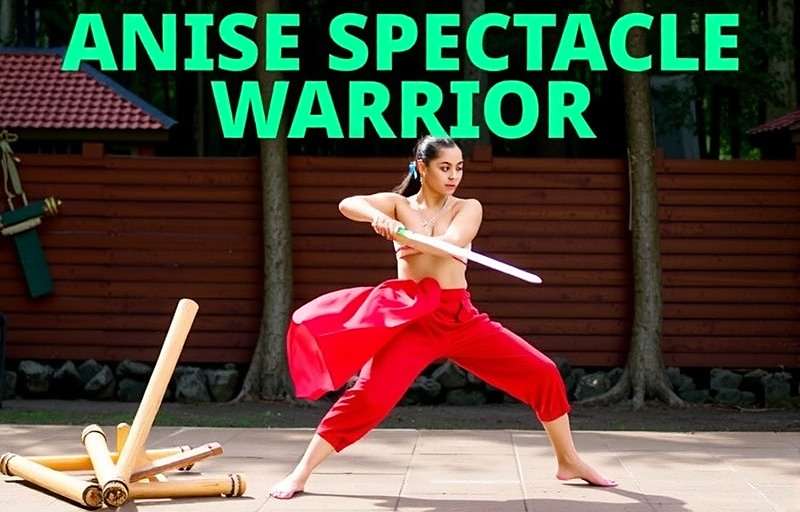
Tournament Winning Strategies
For players looking to compete in Anise Spectacle Warrior's competitive tournaments, these advanced strategies from past champions can give you the edge:
National champion Vishal Reddy swears by his "style rotation" strategy. "I never stick to one style for an entire match," he explains. "I rotate between two or three complementary styles every 30 seconds. This keeps opponents off-balance because they can't adapt to your rhythm. It requires mastering the transition animations, but once you do, it's incredibly effective."
Women's champion Deepa Nair emphasizes the psychological aspect of competitive play. "Many opponents underestimate female players, especially in martial arts games," she notes. "I use that to my advantage by playing defensively at first, making them overconfident, then striking with unexpected combinations. Mind games are half the battle in tournaments."
Regional champion for the Northeast, Sanjay Basu, recommends studying tournament footage. "I watch recordings of top players' matches every day," he says. "You can learn their patterns, strengths, and weaknesses. In the last tournament, I faced a player who always used the same Silambam combo when his health dropped below 30% - knowing that let me counter it perfectly and win the match."
Perhaps the most important tournament strategy comes from multiple champion Rakesh Sharma: "Know when to fight and when to retreat. Many players get caught up in trying to win every exchange, but sometimes stepping back to recover your focus meter or rethink your strategy is the smartest move. Patience wins tournaments more often than flashy moves."
Localized Events and Community Engagement
One of the key factors behind Anise Spectacle Warrior's phenomenal success is its active community engagement and region-specific events that resonate deeply with Indian players. The developers have gone beyond in-game content to build a real connection with their player base.
In-Game Cultural Events
Anise Spectacle Warrior regularly hosts special events tied to Indian festivals and cultural occasions, each offering unique challenges and rewards that celebrate local traditions.
During Diwali, for example, the game transforms into a festival of lights where players must defend sacred anise fields from mythical demons using special fire-based techniques. Completing these challenges rewards players with "Diwali Daggers" and other festive weapons that glow like diyas (oil lamps).
Holi celebrations in the game feature colorful powder fights that temporarily change your warrior's appearance while granting special abilities. The "Holi Hustle" event challenges players to collect colored powders scattered across different regions, which can be combined to create powerful buffs.
Other popular events include:
- Onam Tournament - A Kerala-focused event with Kalaripayattu challenges and rewards inspired by Onam sadya feasts
- Pongal Harvest Challenge - Tamil Nadu event where players must protect crops using Silambam techniques
- Baisakhi Warrior Meet - Punjab event featuring Gatka competitions with special rewards for top performers
- Dussehra Demon Slayer - Nationwide event where players team up to defeat Ravana-inspired bosses across all regions
These events have become major cultural moments within the Anise Spectacle Warrior community, with players often organizing real-life meetups to celebrate while playing together.
Real-World Martial Arts Partnerships
Unlike most mobile games, Anise Spectacle Warrior has transcended the digital realm by partnering with real martial arts schools and organizations across India. These partnerships have helped preserve traditional fighting styles while introducing them to new audiences.
The game's "Warrior Heritage" program donates a portion of in-game purchase revenues to martial arts schools struggling to keep ancient traditions alive. To date, the program has provided funding to over 75 schools across India, from Kalaripayattu gurukulas in Kerala to Gatka akharas in Punjab.
"Anise Spectacle Warrior has been a blessing for our school," says S. Balakrishnan, a Silambam master from Tamil Nadu whose school received funding. "We've seen a 300% increase in students since the game launched, many of them young people who discovered Silambam through playing. The funding allowed us to repair our training hall and purchase new equipment. It's helping keep our tradition alive for future generations."
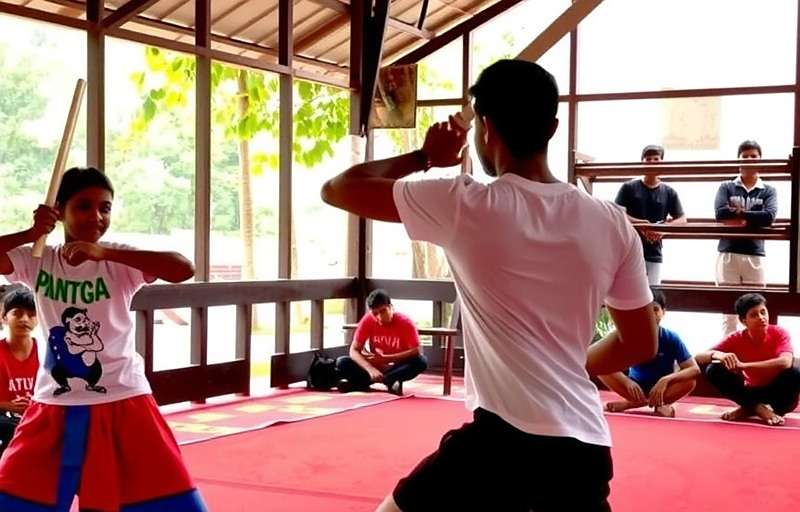
The developers also organize "Warrior Camps" where players can meet real martial arts masters, learn basic techniques, and even have their in-game characters receive special training bonuses for attending. These events have proven incredibly popular, with some camps drawing over 1,000 participants.
"Meeting the real Kalaripayattu masters and then using those same techniques in the game creates a powerful connection," says Bangalore player Ritu Patel, who attended one such camp. "It's no longer just a game move - you understand the history and discipline behind it. That makes every victory feel more meaningful."
Community Content Creation
The Anise Spectacle Warrior community has become a hotbed of content creation, with players producing everything from detailed strategy guides to martial arts documentaries inspired by the game.
YouTube channels dedicated to the game have amassed millions of subscribers, with popular creators like "Warrior Ankit" and "Silambam Sarah" breaking down combat techniques and tournament strategies. Many of these creators have partnered with martial arts schools to produce educational content that bridges the game and real-world practices.
The game's official forums feature fan art competitions where players illustrate their favorite warriors and techniques, often blending traditional Indian art styles with modern gaming aesthetics. The best submissions are sometimes featured in-game as loading screens or character skins.
"The community's creativity has amazed us," says community manager Rohit Verma. "We've seen players create everything from real-life replicas of in-game weapons to full dance routines based on the combat animations. It's inspiring to see how the game has sparked this kind of passion for Indian martial arts."
Educational Impact and Cultural Significance
While Anise Spectacle Warrior is first and foremost an entertainment product, its educational impact and cultural significance have surprised even its developers. The game has become an unexpected tool for preserving and promoting India's martial heritage.
Schools across India have started using Anise Spectacle Warrior as an educational aid, incorporating it into history and physical education curricula. Teachers report that the game has sparked students' interest in traditional martial arts and Indian history in ways that textbooks never could.
"My students were struggling to engage with our unit on medieval Indian history," says history teacher Shweta Iyer from Mumbai. "Then we started using Anise Spectacle Warrior as a supplementary tool. Suddenly, they were asking questions about Rajput warriors, South Indian kingdoms, and martial traditions. Some even started researching on their own time. It's been transformative for their learning."
In 2024, the game received recognition from the Ministry of Culture for its contribution to preserving traditional martial arts. The developers were invited to collaborate on a national digital archive of Indian martial arts, using motion capture data from the game to create educational resources.
Research conducted by the National Institute of Cultural Studies found that 68% of Anise Spectacle Warrior players reported increased knowledge of Indian martial arts after playing, and 23% had either started practicing a traditional martial art or planned to do so.
Perhaps most significantly, Anise Spectacle Warrior has helped challenge stereotypes about Indian culture. "The world often sees India only through yoga and meditation," says cultural anthropologist Dr. Aravind Chandrashekhar. "This game showcases our warrior traditions, our martial philosophy, and the diversity of our combat styles. It's helping redefine global perceptions of Indian culture as multifaceted and dynamic."
The game has also become a point of pride for the Indian diaspora. "As a second-generation Indian-American, I never learned much about our traditional martial arts," says California-based player Raj Patel. "Anise Spectacle Warrior has helped me connect with that part of my heritage. I've even started teaching my kids some of the basic moves from the game. It's become a way for us to connect with our roots."
Future Updates and Expansion Plans
The developers of Anise Spectacle Warrior have ambitious plans for the game's future, with several major updates already announced that will expand both its gameplay and cultural content.
Upcoming Martial Arts Styles
The most highly anticipated update is the addition of four new martial arts styles, expanding the game's already impressive roster. These include:
Cheibi Gad-ga from Manipur - A dynamic spear-fighting style that emphasizes quick thrusts and circular movements. This style will be introduced alongside a new storyline set in the hilly terrain of Northeast India.
Mardani Khel from Maharashtra - A warrior art that combines swordsmanship with wrestling techniques, developed by the Maratha warriors. This style will feature unique horseback combat mechanics not seen in other parts of the game.
Pari-khanda from Bihar/Jharkhand - A sword and shield-based style known for its acrobatic movements and defensive techniques. This addition will include new battlefield environments inspired by eastern India's forts and jungles.
Inbuan Wrestling from Mizoram - A traditional grappling style that focuses on throws and takedowns. This style will introduce new ground combat mechanics and tournament modes.
"Each new martial art requires months of research and development," explains lead combat designer Vijay Singh. "We're currently working with masters from each region to ensure authenticity. These new styles will not only add gameplay variety but also introduce players to martial arts that are on the verge of extinction."
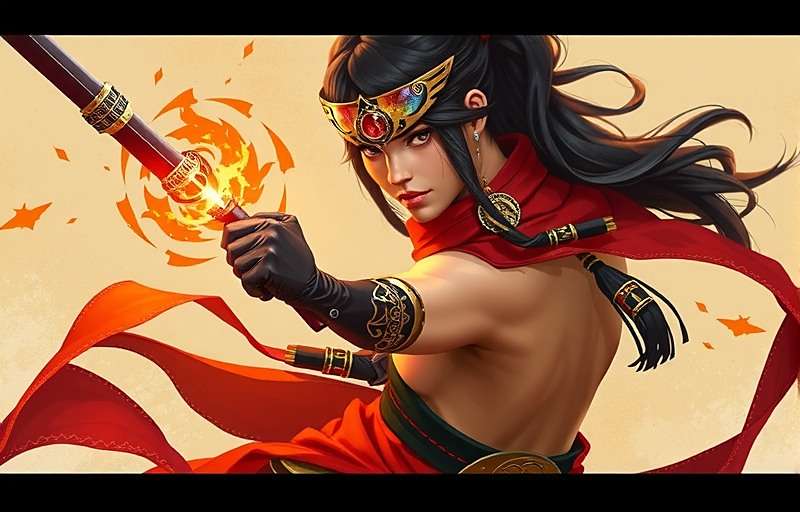
Story Expansion: The Anise Chronicles
Set to release in early 2025, "The Anise Chronicles" will be the game's biggest story expansion yet, delving deeper into the mythology behind the sacred anise crop and its role in Indian history.
The expansion will feature five new story chapters, each exploring a different period in Indian history from ancient times to the medieval period. Players will encounter historical figures like Rajput warriors, Maratha generals, and South Indian kings, participating in pivotal battles and events.
"The Anise Chronicles will blend historical accuracy with mythological elements," says narrative director Anjali Bose. "Players will get to experience famous battles from Indian history while uncovering the secret role that martial artists played in protecting our cultural heritage. It's educational entertainment at its best."
International Expansion
Following its unprecedented success in India, Anise Spectacle Warrior is set to launch internationally in late 2025. The game will be released in major markets including the United States, Europe, Southeast Asia, and the Middle East.
The international version will include all the content from the Indian release, with additional educational materials explaining the cultural context behind each martial art. The developers hope to introduce global audiences to India's rich warrior traditions while dispelling stereotypes about Indian culture.
"The world knows about Indian spirituality and cuisine, but few are aware of our martial heritage," says studio head Rajiv Menon. "Anise Spectacle Warrior gives us a platform to share that part of our culture with the world. We're not just exporting a game - we're exporting our heritage, our history, and our philosophy of warriorhood."
To support the international launch, the developers are partnering with martial arts organizations worldwide to host exhibitions and demonstrations of the Indian styles featured in the game. They've also collaborated with Indian embassies to include the game in cultural exchange programs.
Conclusion
Anise Spectacle Warrior represents more than just a technological achievement in Indian game development - it's a cultural phenomenon that has reconnected millions of Indians with their martial heritage.
In a gaming landscape dominated by Western and Japanese titles, Anise Spectacle Warrior stands out as a uniquely Indian experience that doesn't compromise on quality or gameplay depth. It proves that games can be both entertaining and educational, both commercial successes and cultural ambassadors.
What makes the game truly special is how it has brought together people from different regions of India, fostering appreciation for each other's traditions. A Punjabi player mastering Kalaripayattu, a Tamil player learning about Gatka - these cross-cultural exchanges are helping build a stronger sense of national unity through shared appreciation of our diverse heritage.
As Anise Spectacle Warrior continues to grow and expand, both in India and internationally, it carries with it the potential to transform global perceptions of Indian culture. It showcases not just our ancient traditions, but also our ability to innovate and create world-class entertainment that honors those traditions.
In the words of 78-year-old Kalaripayattu master Guru Vasudevan Nair, who consulted on the game: "When I started teaching this art over 60 years ago, I worried it would die with my generation. Now, I see young people across India and soon the world practicing moves I taught the game developers. Anise Spectacle Warrior has given our ancient traditions new life. That is its greatest victory."